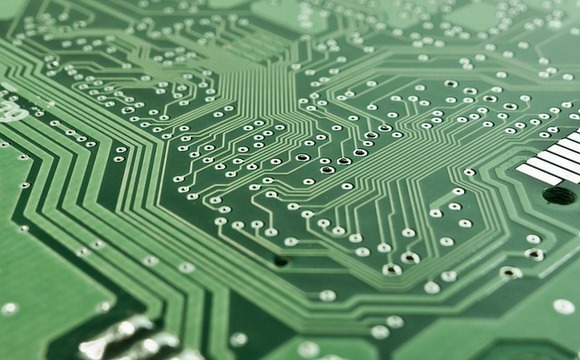
Many people, especially newcomers to the workforce, may feel confused when they first hear the term Process Engineer. What exactly does a process engineer do?
First, let’s understand what process means. Simply put, a process refers to the manufacturing procedure—the steps and methods used to produce a product.
What Does a Process Engineer Do?
A Process Engineer is responsible for defining how a product is manufactured and assembled. Their work often includes:
-
Developing manufacturing and assembly processes
-
Designing jigs and fixtures for production
-
Evaluating production capacity, time, and labor requirements
-
Optimizing manufacturing efficiency and yield
-
Ensuring product safety and quality
-
Troubleshooting production issues and preventing recurring problems
-
Setting safety protocols to minimize workplace accidents
The Core Mission of a Process Engineer
Wow! That sounds like a heavy responsibility, right? But if I had to sum it up, a process engineer’s main goal is simple:
Reduce manufacturing costs and improve yield—without compromising product quality.
Sounds easy? Well, it’s not!
At the very least, a process engineer must ensure that product quality remains at the intended level. If yield drops, it means more materials and labor costs, which is unacceptable. This is why a process engineer must constantly monitor production and look out for any quality variations.
A Day in the Life of a Process Engineer
From my experience, over 70% of a process engineer’s work involves identifying and solving quality issues on the production line. So if you think this job is about sitting in an air-conditioned office attending meetings—you’re in for a surprise! Most of the time, process engineers are on the factory shopfloor, troubleshooting problems.
Once product quality is stabilized, process engineers can shift focus to:
-
Improving yield to boost production efficiency.
-
Reducing manufacturing time to save labor and costs.
Achieving these often requires adjustments to the process.
Early Involvement in Product Development
 Larger companies often have process engineers involved early in product development stage, a practice called Early Involve. This means working with designers to:
Larger companies often have process engineers involved early in product development stage, a practice called Early Involve. This means working with designers to:
-
Identify potential design issues that could impact manufacturability.
-
Provide manufacturing guidelines to ensure smooth production.
For example, setting minimum spacing between PCB components to prevent solder short circuits. This proactive approach helps avoid costly redesigns later.
How to Become a Process Engineer
If you’re interested in becoming a process engineer, a STEM (Science, Technology, Engineering, and Math) background is highly recommended. Fields like:
-
Mechanical Engineering
-
Electrical Engineering
-
Industrial Design
-
Chemical Engineering
are common pathways into this career.
Most importantly, you need a curious mind—because as Detective Conan would say, “There is only one truth!”
Workingbear’s Advice for Aspiring Process Engineers
Besides strengthening your technical knowledge, a process engineer must learn how to operate the processes they manage. You are the one defining the process, and it’s your responsibility to teach production line workers how to follow the standard procedures you set.
You also need to develop the habit of asking “Why?”
- Why is this step done this way?
- What are the benefits?
- Why is the assembly order like this?
- Would a different sequence improve efficiency?
If you’re lucky enough to land a Process Engineer position, don’t be afraid to take instructions from production line workers when you’re still a rookie. You need to learn from them—how to assemble products, how to speed up production, and how things are done on the floor.
Once you understand the process, start questioning why their actual assembly steps differ from the SOP (Standard Operating Procedure). When you have new ideas for process improvements, you’ll need the help of production workers to test them. In most cases, the production team is obligated to assist engineers in running experiments and collecting data. At this stage, you’ll be the one giving instructions—but remember, it’s best to work together rather than simply bossing people around! A good working relationship makes everything smoother.
The Difference Between a Process Engineer and a Product Engineer
Now, what about Product Engineers? In Workingbear’s opinion, a product engineer is essentially a type of process engineer.
A product’s manufacturing process is usually divided into multiple steps. Take IC packaging as an example—it involves wire bonding, molding, plating, marking, lead forming, and so on.
-
A Process Engineer is typically responsible for only one of these processes across all products. For example, a process engineer might specialize in wire bonding, while other engineers handle different steps.
-
A Product Engineer, on the other hand, oversees all manufacturing steps for a specific product—from wire bonding to final lead forming.
Generally, a Product Engineer is assigned to a specific product category—for example, they may focus only on SOIC packages or BGA packages.
A simple analogy:
-
A Process Engineer is like a floor manager of a high-rise building—responsible only for one specific floor.
-
A Product Engineer is more like the owner of a multi-story townhouse—managing everything from the ground floor to the rooftop.
Regardless of the title, the core responsibilities of both roles remain the same: ensuring efficient production while maintaining quality and yield. Some companies only have Product Engineers, while others only have Process Engineers, and some have both—depending on their structure and workforce needs.









Leave a Reply